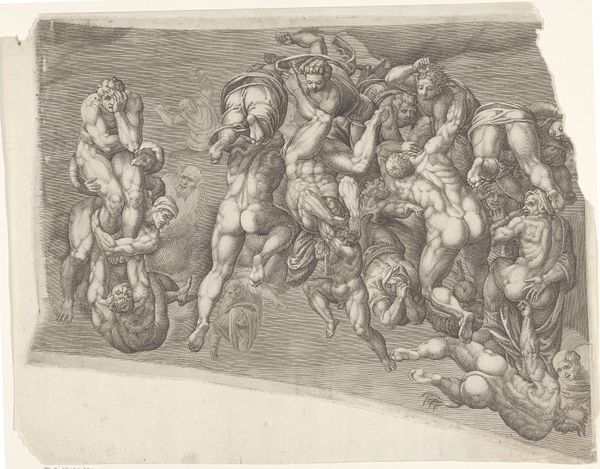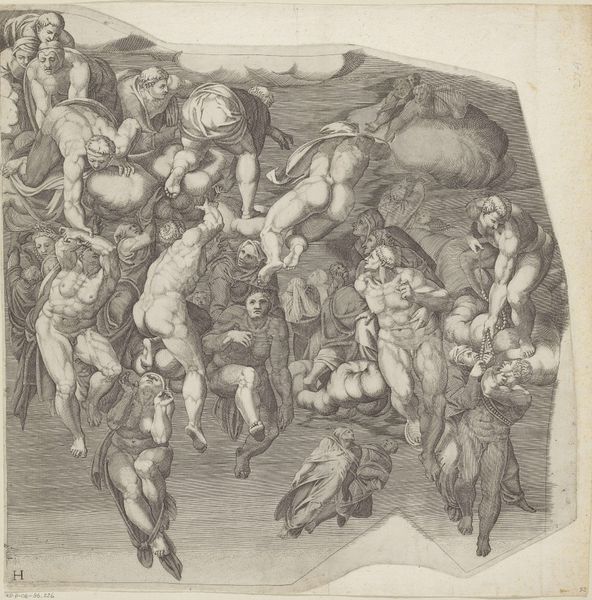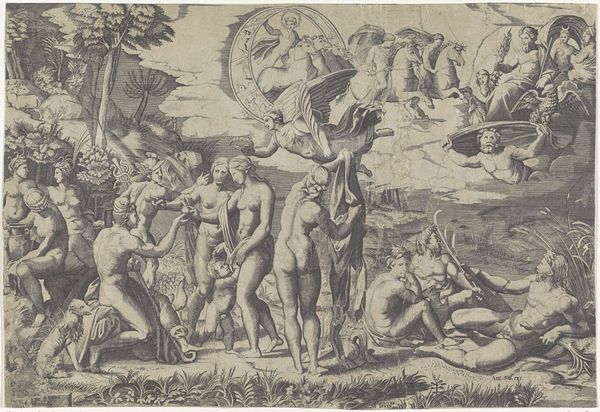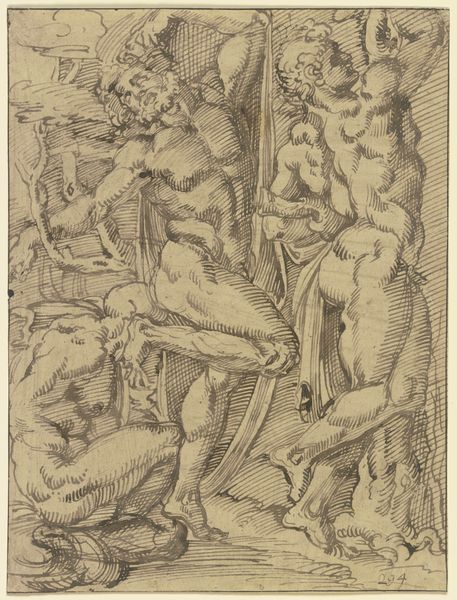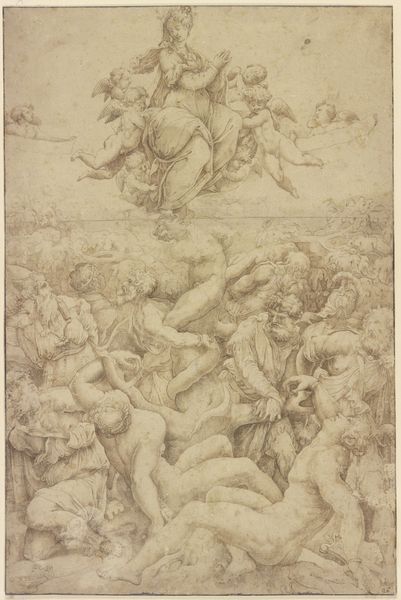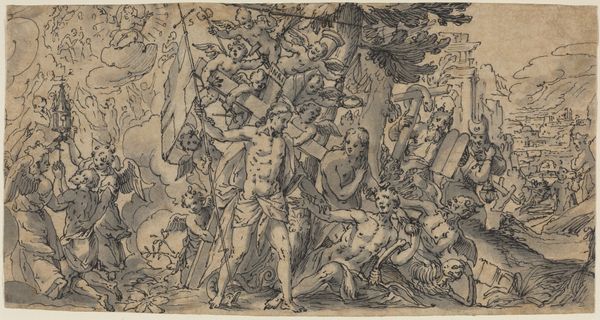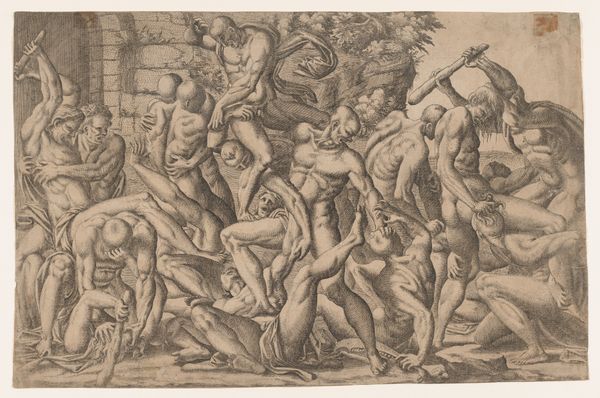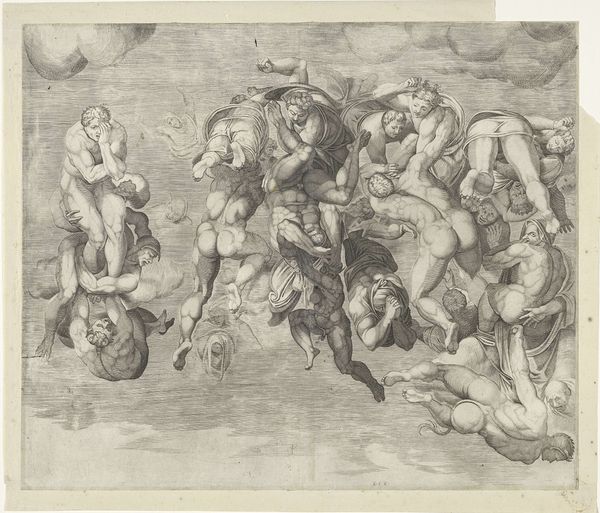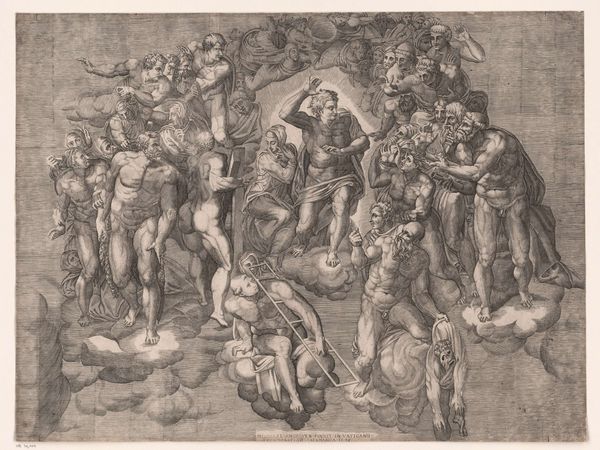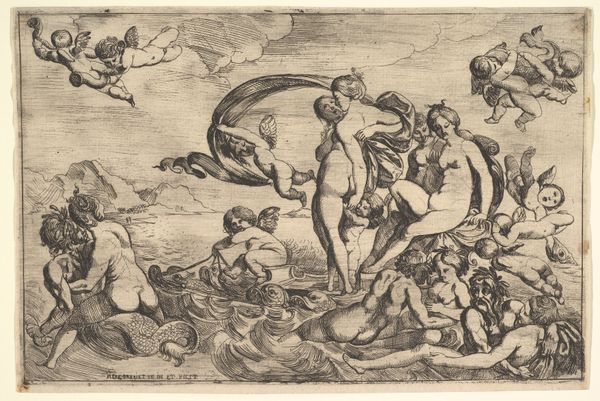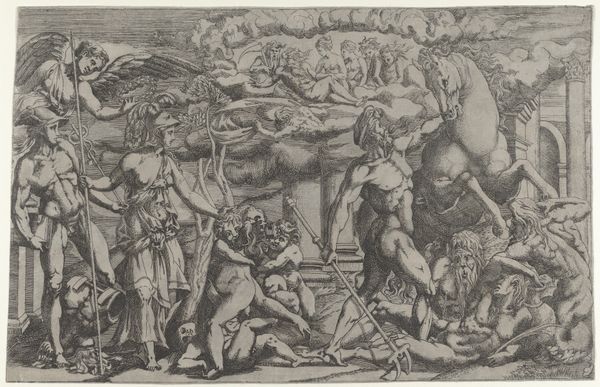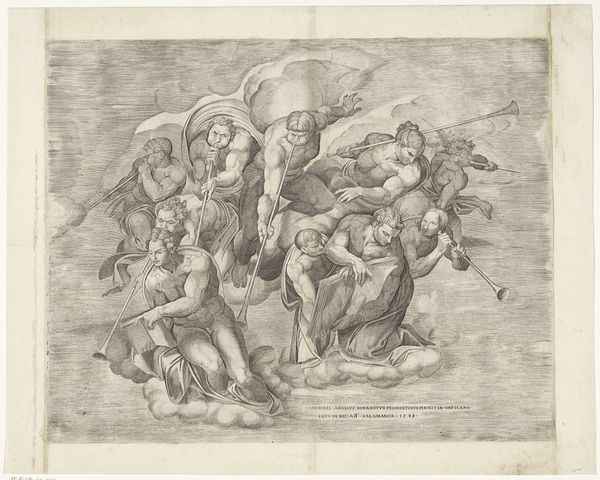
print, engraving
# print
#
pen sketch
#
pencil sketch
#
mannerism
#
figuration
#
line
#
history-painting
#
nude
#
engraving
Dimensions: height 430 mm, width 545 mm
Copyright: Rijks Museum: Open Domain
Curator: Standing before us is "Het laatste oordeel," or "The Last Judgment," a 1548 engraving by Nicolò della Casa, housed right here in the Rijksmuseum. Editor: It’s immediately chaotic. A swirl of bodies, mostly nude, all seemingly caught in this upward, almost desperate, surge. It definitely evokes a sense of upheaval. Curator: Upheaval indeed! Considering the socio-political landscape of 16th century Europe, ripe with religious reformations and social unrest, a piece depicting judgment, paradise, and damnation holds considerable weight. The very process of engraving, disseminating imagery to a wider audience, democratized these potent messages. Editor: And what about the nude figures themselves? Are they merely artistic renderings, or does the stark vulnerability of the exposed body signal something about social standing, shame, or divine judgment? Curator: Absolutely the exposed figures are an aesthetic choice, referencing the classicising influence of mannerism that we can see with its exaggerated and theatrical style. We can interpret this through production -- what did prints offer artists and artisans, and how were such prints made available and used by those beyond the artistic sphere. Editor: Which raises the issue of access. Who, exactly, would have been purchasing and engaging with these prints? Was it primarily the wealthy elite, reinforcing existing power structures through religious iconography, or was there a genuine attempt to reach a broader populace with a warning about moral rectitude? Also, thinking about the labor – the engraver’s skilled hand meticulously creating these lines, making multiple impressions -- this highlights the repetitive industrial labor that proliferated images. Curator: Your points are essential for understanding how material culture interacts with social structure. However, there's an element of skillful craft here. The artist's mark -- visible in those delicate lines that build muscular forms. It is not an anonymous product from an assembly line. Editor: Agreed, though even that artistic skill is commodified in its own way. This engraving is both a singular object and part of a larger, reproducible system, reflecting art as an industrial activity of production. What do you think the proliferation of such engravings really meant in the spiritual lives of regular people? How was their concept of the 'divine' changed by images made available in marketplaces? Curator: Indeed. It provides endless interpretive possibilities regarding the artist's intention, material dissemination, and the artwork's social and historical effects. Editor: I walk away thinking about power, production and religion. Who did these engravings speak to? What action did they inspire? The implications continue to unravel long after the ink has dried.
Comments
No comments
Be the first to comment and join the conversation on the ultimate creative platform.
